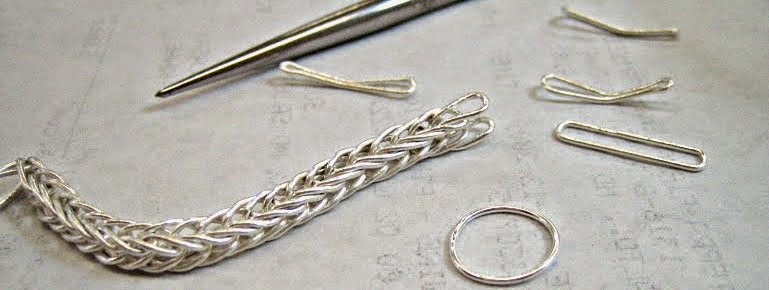Taking a Class
Making the Commitment
First, let’s be clear that what follows is primarily a discussion based on taking a creative elective class. I am not talking about a required class or a topic requiring you to memorize facts or manipulate numbers. I am talking about an art class where you will create something, be critiqued, and improve your skills. Choosing the class to take is not a trivial decision because not only is it a time and money commitment, but an artistic direction commitment. Usually, I take a class in a topic that has interested me for several years or in a topic I want to take a deeper dive on and refine my skills. This summer I am taking a class in chainmaking, 'Classical Loop-in-Loop Chains', which is an ancient method for making chains.
The instructor will apply his or her own unique flair or approach to the class. I find myself giving an almost equal weighting to the instructor as to the class description at times. In my case, I know the instructor is good because I have taken a class from her before. If you don’t know the instructor or the instructor’s reputation, ask around before registering.
Because I take jewelry classes, the work space is an important consideration. Is it adequate size for the student enrollment? Are the community tools and equipment in good supply and shape? It doesn’t need to be the Hilton, but it does need to be adequate. You don’t want to spend literally half the class waiting to use the one kiln or one whatever.
The class day and time needs to work into my schedule or I need to clear my schedule to make it work. Invariably an overnight work-related trip comes up whenever I sign up for a 10-week class. The open shop hours schedule and how it maps into my own work schedule is also important but this information is not always available until after class gets started.
A few words need to be said about the time commitment. Take special care to make out a daily food plan for the days you will be taking class or going to the workshop. The class will be one or two days per week. But, to get the work done you will need to be in the workshop at EVERY opportunity, which at times may mean every day. Very soon, you forget to go to the grocery store, your family is own their own for meals, and you are eating fast food on the go which gets expensive and is not healthy. Just plan ahead to plan ahead. Your time will become precious, especially as a class deadline approaches, and you will thank yourself later if it is agreed which tasks can slip or be delegated while you are taking this class. The last thing you want to do is lose sleep and eat only unhealthy food.





![Reblog this post [with Zemanta]](http://img.zemanta.com/reblog_e.png?x-id=bf86d63a-400e-4a16-8125-bf6305df95fa)

![Reblog this post [with Zemanta]](http://img.zemanta.com/reblog_e.png?x-id=75b3460c-40d0-4507-92d9-e850ffc45b96)

![Reblog this post [with Zemanta]](http://img.zemanta.com/reblog_e.png?x-id=76fe5cd9-0d0c-4d32-995f-3678cf883b3f)





